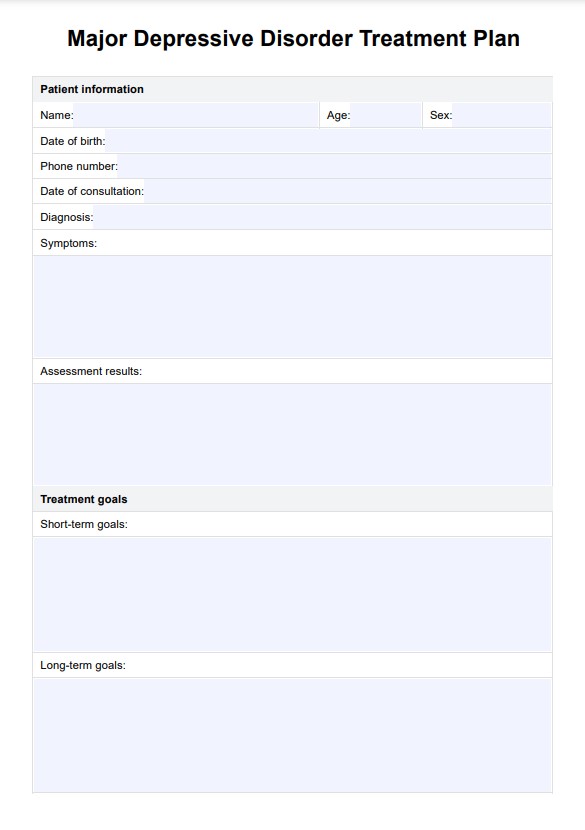Major Depressive Disorder Treatment Plans are typically created by mental health professionals, including psychiatrists, psychologists, therapists, or primary care physicians, in collaboration with the individual receiving treatment.

Major Depressive Disorder Treatment Plan
Get access to a free Major Depressive Disorder Treatment Plan and example. Streamline your clinical documentation with our free template resource.
Major Depressive Disorder Treatment Plan Template
Commonly asked questions
A Major Depressive Disorder Treatment Plan typically includes information on the individual's diagnosis, treatment goals, recommended interventions (such as therapy, medication, or lifestyle changes), and ways to track progress.
Implementing a Major Depressive Disorder Treatment Plan involves collaboration between the individual and their healthcare provider(s). It may include attending therapy sessions, adhering to medication regimens, practicing coping skills, and making lifestyle modifications as outlined in the plan.
EHR and practice management software
Get started for free
*No credit card required
Free
$0/usd
Unlimited clients
Telehealth
1GB of storage
Client portal text
Automated billing and online payments











